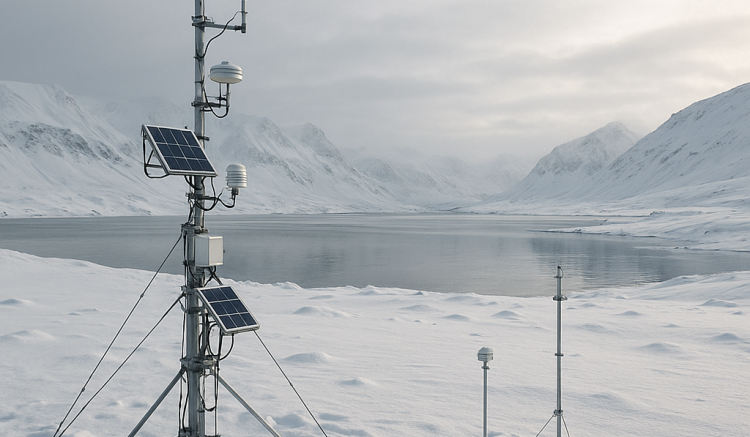There are several major initiatives and programs in the Arctic specifically designed to monitor and measure the effects of climate change. It’s an obvious place to monitor as the Arctic is warming roughly four times faster than the global average, making it a critical region for climate research. Here are some of the key initiatives:
1. Arctic Monitoring and Assessment Programme (AMAP)
- What it does: Established by the Arctic Council, AMAP monitors and assesses pollution and climate change in the Arctic.
- Focus areas: Climate change, pollution, ecosystem health, human health, and more.
- Why it matters: AMAP publishes regular scientific reports that inform policy and global understanding of Arctic climate impacts.

2. International Arctic Buoy Programme (IABP)
- What it does: Deploys and maintains drifting buoys in the Arctic Ocean to collect data on temperature, pressure, ice motion, and more.
- Use of data: Helps track sea ice movement and thickness and contributes to global climate models.
3. MOSAiC Expedition (2019–2020)
- What it was: The largest polar research expedition ever, led by Germany’s Alfred Wegener Institute.
- Details: A research icebreaker drifted with the Arctic sea ice for a year, collecting data on atmosphere, sea ice, ocean, and ecosystems.
- Impact: Generated massive datasets that are still being analyzed and are critical for improving climate models.

4. NASA’s Operation IceBridge and ICESat Missions
- Operation IceBridge: An airborne mission (2009–2021) that measured polar ice thickness.
- ICESat-2 (launched 2018): A satellite that measures changes in ice sheet elevation and sea ice thickness with high precision.
- Why important: These missions provide long-term records to track ice loss in Greenland and sea ice changes in the Arctic Ocean.
5. Sustaining Arctic Observing Networks (SAON)
- Aims: Improve the coordination of Arctic observations across different nations and scientific disciplines.
- Backed by: The Arctic Council and International Arctic Science Committee.
- Goal: To create a more comprehensive and accessible network of climate and environmental monitoring systems.
6. Indigenous-Led Monitoring Initiatives
- Examples: ELOKA (Exchange for Local Observations and Knowledge of the Arctic) and ICC (Inuit Circumpolar Council) efforts.
- Why it matters: Indigenous communities have centuries of observational knowledge that complements scientific data and helps track ecological changes.
